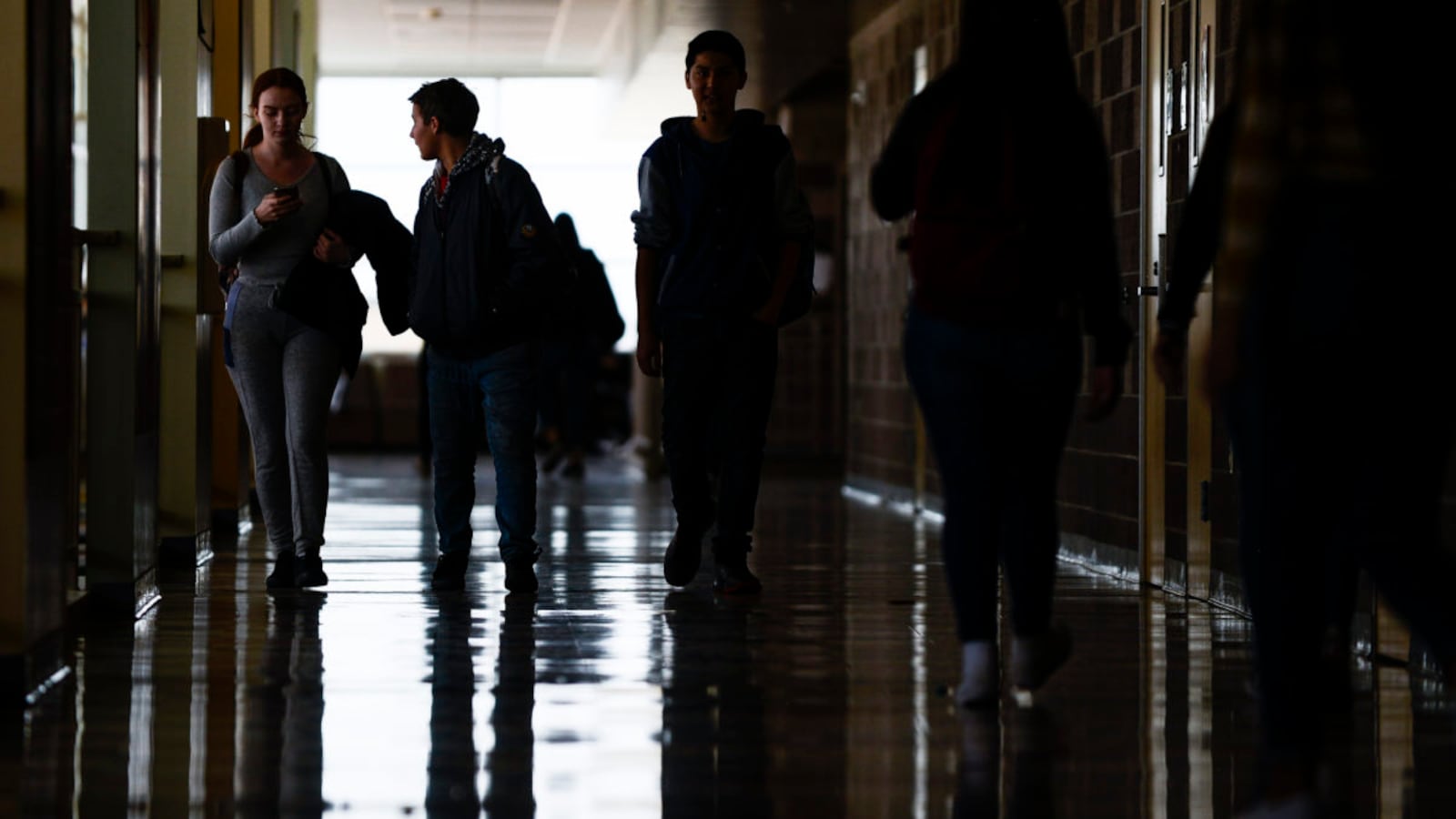Trying to cut down on the high number of students who disengage and drop out, Adams 14 officials plan to change how teenagers transition from middle school into high school.
With a four-year $91,000 grant, officials are planning a four-day freshman academy and are creating a warning system to track students who may be at risk of dropping out. The money will also pay for parent engagement nights where officials will teach parents about graduation requirements and how to use an online system to track their child’s academic progress.
“We want to have more opportunities to be with the students and the families as they come into the high school,” said Shelagh Burke, grant manager and executive director of federal programs for Adams 14.
Decreasing dropout rates is especially important for Adams City High School. Adams 14 is the first district in Colorado under management by a private company and is under a microscope to improve student achievement in the next four years.
The state grant, created last year, is intended to help schools support ninth graders to develop skills to stay in school. Denver’s Collegiate Preparatory High School and the St. Vrain district’s Longmont and Skyline high schools are also among the schools in nine districts that won grants.
In Adams City High School, officials say less than 25% of students entering ninth grade meet standards in English, and less than 20% meet standards in math.
It’s a difficult starting point, officials say, and it contributes to the school losing students every year. Typically, of approximately 540 entering freshmen, only 320 remain as seniors, according to the grant application.
According to the most recent state data, the high school had a 5.3% dropout rate, down from 5.7% the previous year, but much higher than the state’s average of 2%.
Adams 14 officials expect to identify about 120 students at highest risk of dropping out — those with two of the following: poor attendance, failing grades, or behavior issues — and to offer support such as tutoring or help from an outside organization.
All ninth grade teachers will have access to a data dashboard, so they can help students in their class who are at risk too. And with the school’s counselors or social workers, the teachers will meet every two weeks to discuss the highest-risk students and whether the interventions are working.
The grant will help pay team members for meeting outside the union’s contracted hours. Officials of MGT Consulting, the management company, previously cited the contract day and the inability to schedule training or collaboration outside it, as a limitation.
Burke said the district conducted surveys, and found that many parents and students wanted to better understand graduation requirements.
Family engagement nights that will happen in the next few months are meant to address that request.
“We want to have our parents well equipped but we’re here to do it with them,” Burke said.
One Adams City student, Eduardo Arroyo, a 14-year-old freshman, said one of his cousins dropped out from the high school, “because of staff and teachers” who didn’t seem to care.
For himself, Arroyo said his first year is “going good,” but said he wishes he could switch teachers in one class.
The planned changes will help Adams City in building relationships between students and their teachers.
Over the summer, middle school teachers and counselors will meet with ninth grade teachers and counselors at the high school. The collaboration is supposed to ensure that high school staff know who they’ll be getting and know what has already been tried, successfully or not.
In the fall, ninth graders will start high school with a four-day academy.
During that time, students will learn how to navigate the school building, how to find their classes, and will meet their teachers to start getting to know them.
Students will also meet mentors who are seniors at the school. It’s not a new practice, but Adams 14 plans to use the grant money to train more people to run the program and to identify more senior leaders to cut mentors’ responsibilities from 15 to 20 freshmen down to a handful.
Students need to have strong relationships because, “students’ needs aren’t just academic,” said Jamie Ball, accountability and assessment manager for Adams 14.
District officials increased the length of the academy, which they first envisioned as a two-day experience, so they can also let incoming students sample some of the elective classes they can choose to take.
The idea is students will then be able to pick something that truly interests and excites them.
“We wanted to not just tell them verbally what it’s like, but really provide the experience,” Burke said. “We know that’s what helps retain our students when they’re connected and engaged.”


